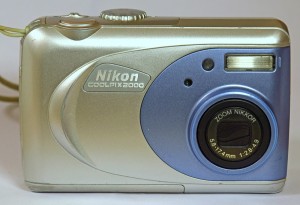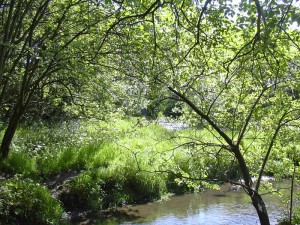Vintage and early digital cameras
Vintage and early digital cameras are to my mind anything below about 1 mega pixel, anything that uses forgotten technology such as floppy disks and SmartMedia cards, and indeed anything from the previous century.
It makes sense to arrange this page in chronological order, and highlight the sensor size (in mega-pixels)
1996 – Kodak DC25 – 0.2MP
Date: 1996
Sensor:
Image size: 493×373 (High), 320×240 (Standard)
Lens: 47mm equivalent fixed focus
Storage: Compact Flash
Features: Many people wrongly state that Kodak missed the boat when it came to digital photography, but nothing is further from the truth – Kodak were early in to the market, but eventually couldn’t compete with the cheaper production from far-eastern producers. Back in 1996 this camera has introduced almost everything needed in a compact digital camera – LCD screen, removable storage etc. And it was affordable at around $500! The manual states the image size as 493×373, but the images are in a proprietary ‘.k25’ format, and by the time I’ve converted them to jpegs the size is 501×379.
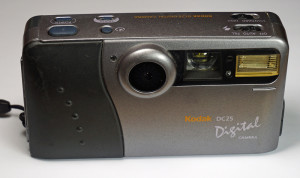

1996 – Casio QV-700 – 0.3MP
Date: 1996
Sensor: CCD, 1/6″- crop factor ~10
Image Size: 640×480
Lens: 3.9mm, f2 (~38mm equivalent)
Storage: Compact Flash
Features: Aperture F2, F8 or Auto. Macro capability. Lens swivels 180 degrees for ‘selfies’ (the view then swaps left/right – very clever!). Several white balances, options of Fine, Normal & Economy (makes little difference to the quality). Takes Compact Flash cards. The photos are in ”.cam” format! – however they can be opened in Photoshop as .jpg, and saved at such, so no need for the original Casio software.
All photos are at 640×480, although it looks like the Economy ones may be 320×240 before converted to .jpg.
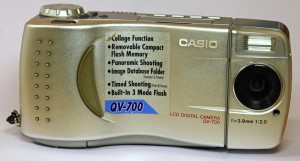

1997 – Sony Mavica MVC-FD7 0.3MP
Date: 1997
Sensor:
Image Size: 640×480
Lens: 4.2mm-42mm zoom, f1.8
Storage: 3.5″ floppy drive
Features: 10x zoom.
Purists would say that it isn’t a digital camera, but a video-still camera. Well, it writes its photos to disk in digital format, so it’s a digital camera. And write to disk is what it does – it’s got an inbuilt 3.5″ floppy drive! Makes a great noise when taking photos, and eats batteries (although the batteries are now 18 years old, so no wonder). All photos come out at 640×480.
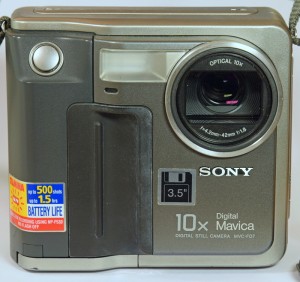
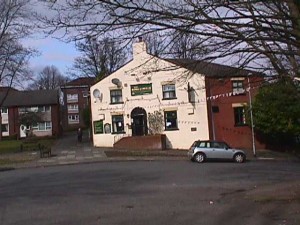
1998 – Agfa ePhoto 780
Date: 1998
Sensor:
Pixels: 0.3Mp
Image sizes: 320×240 and 640X480
Lens:
Storage: SmartMedia
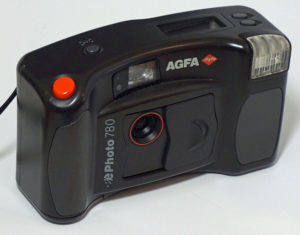

1998 – JVC GC-S5
Date: 1998
Sensor: 1/1.7″ CCD
Pixels: 1.5Mp
Image sizes: 1280×1024 and 640×480
Lens: 7.6mm, f/3.2
Storage: SmartMedia
This is the same camera as the Fujifilm MX-700
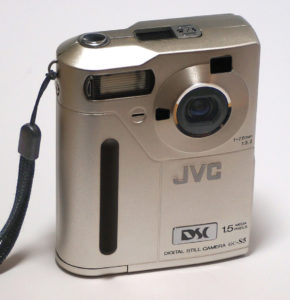
1998 – Kodak DC200 – 1.0MP
Date: 1998
Sensor: CCD, crop factor ~6.5 (from EXIF data)
Image Size: 1152×863
Lens: 6mm fixed-focus (39mm equivalent)
Storage: Compact Flash
We’ve now reached the magic ‘Mega pixel’ milestone, although this isn’t really good enough for a 7×5 print.
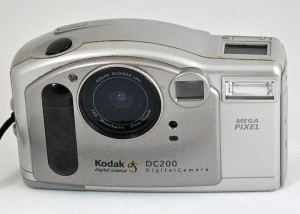
2002- Nikon Coolpix 2000 – 2.0MP
Date: 2002
Sensor: CCD, 1/2.7″ – crop factor ~6.5
Image Size: 1632×1224
Lens: 5.8mm-17.4mm zoom, f2.8-4.9 (~38-114mm equivalent)
Storage: Compact Flash
By this date the digital camera had arrived – the pictures from this camera were enough to make me abandon film forever (well, for real photos – I still like film for the ‘experience’). 2 Megapixels, giving crisp photos of 1632×1224.
